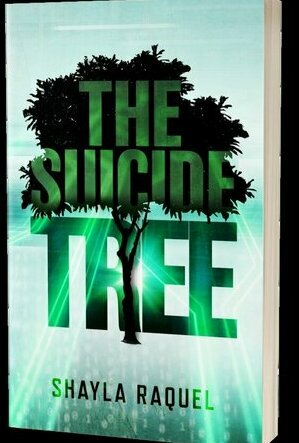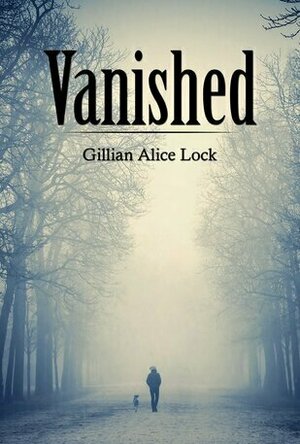Phil Leader (619 KP) rated Aware (The Corporeal Pull #2) in Books
Nov 8, 2019
In this second book Terra continues her fight on Earth against the Scourge, intending to find and confront their master. She also sends a message to the Tweens for help. But as everyone from her former existence believes she is dead (as doctrine states that guides cannot travel to Earth) will the message be believed? Will she be able to protect Liam from the Scourge?
I'd not read the first book for the series so it took a while to get to grips with what was going on as the first scene is a battle between Terra and the Scourge over Liam. But it is soon clear what is going on.
Terra makes a good protagonist; she is determined but at the same time has a lot of doubts and is reluctant to put others in danger despite the disadvantage this often puts her at. Her feelings for Liam are both a strength, giving her a will to carry on the fight almost single handed, and a weakness as she tries to protect him.
The plot moves at a rapid pace, as the book goes on alternating between events on Earth and those in the Tweens where the blissful and rather blinkered existence for the guides and other entities is not willing to accept the reality of the Scourge. As the story progresses there is real sense of Terra's desperation at facing the Scourge alone. The inertia at reacting in the Tweens is well worked out and really helps to build the tension, and it was good to see that what were supposed to be omniscient and powerful beings could be as prejudiced and indecisive as us mortals.
For my taste I felt Terra went over a lot of the same ground in her thoughts again, and although this was in keeping with her character as a reader I already recognised the points being made and didn't need to read them again. But this is minor in the scheme of things.
The writing is good and fluid and the ideas here, although not new, are used in interesting ways. I suspect that the framework of the story doesn't bear too close an examination but this is about being along for the ride with Terra, not an actual representation of what may exist on the other side of mortality.
Overall I enjoyed reading this immensely. Would I recommend this to others looking for something a bit different? Yes, definitely. Would I buy the next book? I would definitely like to find out what happens to Terra and Liam and how the Scourge is defeated.
Night Reader Reviews (683 KP) rated The Suicide Tree in Books
Jan 9, 2020
Trigger Warning: Although I don’t usually feel like I need to add these to my reviews I feel this may be an exception. The death of Knox’s parents is a tragedy and a large part of the story and is brought up very frequently.
Knox Kevel’s parents died in an explosion three years before the story begins. Knox, being almost a computer genius becomes a hacker known as The Suicide Tree while his parents are still alive. After their death, he works for people on the black market and attracts the attention of the FBI. The FBI gets ahold of him twice and he is facing prison time when Arlo Jenson pops in. Arlo wants Knox to work for him and if Knox agrees Arlo will call in a favor with the DA and have Knox’s charges dropped.
Knox ends up flying to Italy with Arlo, in hopes of finding the person who hurt Arlo as a child. Knox and Arlo stay with Norah, Arlo’s sister, and her daughter Jessa. The four of them team up and travel to many well-known cities in Italy trying to discover the truth. The truth about what? Well, you will just have to read The Suicide Tree to find out for yourself.
What I liked most about this book was the interwoven stories of Knox, Arlo, and the mysterious person who harmed Arlo. It was actually hard to find something that I didn’t really like about this book. After thinking about it I would say that the reasoning behind Arlo’s childhood assault (for lack of a better term) was a bit on the anti-climatic side. I was hoping for something a little more in-depth than what was offered.
In all honesty, I believe just about anyone could read this book. There is little in the lines on inappropriate material in this book. The book is also relatively short and does not require a lot of dedication making it perfect for the occasional reader. I would rate this book 4 out of 5 because the plot line was well thought out and there was very little that I questioned after finishing the book. The story was strong and extremely entertaining. I would recommend it to anyone who wants a quick read.
Night Reader Reviews (683 KP) rated Vanished in Books
Mar 18, 2020
Andrea lives with her little dog, Muff, out in the country. She tries to live a structured life but since she works from home she finds herself giving in to cravings more often. Luckily Muff is extremely high energy for a little dog and requires Andrea to take her for long walks. One day Andrea makes plans with the neighbor guy for a date after Muff’s walk. The neighbor waits for her but she doesn't show up, for years.
During their walk Andrea and Muff finds themselves pulled into a dense yellow mist and when it dissipates things have changed. The area they are in looks familiar yet it is not the home they are used to, but instead, it looks more like pictures from a history book. Andrea draws a lot of attention to herself from the way she talks and dresses and soon finds herself with Father Jones. Through the Father, Andrea learns of Robert who also seems to have come from the future. Andrea manages to secure work along with room and board for herself and Robert at the home of William Farthing, a Lord. Sadly Andrea knows of the fate that is going to befall William and wars with herself about intervening. She also must come up with a decision if she wishes to return to her old life in the 21st century or try to keep her new one int the 17th.
I enjoyed how both positive and negative aspects of the 17th century are addressed. The dirty and poor living conditions are clearly depicted, as are the differences in food compared to what we are used to today. The lifestyle of those in the 17th century is very different from modern times but slower and calmer as well. There was inconsistency with the names of the characters in a few places. At times it was as if the reader is expected to recognize the name of a character that is only mentioned once. I can only guess that this is in error. The back of the book also says that it takes place in 2015 but in the actual story it is (to start out with) 2019. Without going into a lot of details as to why the wedding is also in the wrong year.
There is nothing in this book the I noticed that would make it inappropriate in any way. The topic and writing style might make it quite a bit boring for even middle school-aged readers. Those who like historical fiction and romance will probably enjoy this book. I rate this book 2 out of 4. Besides the inconsistencies and other issues, I mentioned earlier the book also had multiple typos and grammar errors. While I myself am not good in that area of writing the errors in this book were glaringly obvious even to me. The book needs to be closely edited and this seriously lowered the score.
https://www.facebook.com/nightreaderreviews/
https://smashbomb.com/nightreader
https://nightreaderreviews.blogspot.com/

VR Real Airplane Pilot Flight Simulator Game Free
Games and Sports
App
*** Get ready for the best VR flight simulation and air racing game and Experience the thrill of VR...

Kung Fu Panda 2 Storybook
Book and Education
App
★ #1 in Books (iPhone) - May 2011 ★ #2 in Books (iPad) - May 2011 ★ Featured in What's Hot...

The Last Night
Video Game Watch
Humans first knew the era of survival. Then they knew the era of work. Now they live in the era of...
adventure

HD Doc Scanner and PDF Maker Plus OCR
Business and Education
App
========== NEW DOC SCANNER======= HD Doc Scanner is the best app for quickly scanning and saving...

Siddur Zmanim Luach Minyanim
Reference and Utilities
App
Take your weekday siddur with you with this feature-packed Jewish prayer book. You'll get Ashkenaz,...
Ivana A. | Diary of Difference (1171 KP) rated Strange Weather in Tokyo in Books
Oct 5, 2020
<a href="https://diaryofdifference.com/">Blog</a>; | <a href="https://www.facebook.com/diaryofdifference/">Facebook</a>; | <a href="https://twitter.com/DiaryDifference">Twitter</a>; | <a href="https://www.instagram.com/diaryofdifference/">Instagram</a>; | <a href="https://www.pinterest.co.uk/diaryofdifference/pins/">Pinterest</a>;
<img src="https://diaryofdifference.com/wp-content/uploads/2020/08/Book-Review-Banner-33.png"/>;
Being born in Macedonia, I grew up reading books that were mostly translated. Because of that, I always appreciate the amazing job that translators do and have always cherished translated copies of my books. Strange Weather in Tokyo is no different, and Allison Markin Powell did an amazing job translating this book.
I read this book in August as part of the Tandem and Granta Books Instagram readalong - to celebrate #Kawakamimonth as well as Women in Translation month - and I am so glad I was able to join.
<b><i>Synopsis:</i></b>
One night when she is drinking alone in a local bar, Tsukiko finds herself sitting next to her former high school teacher. Over the coming months they share food and drink sake, and as seasons pass - from spring cherry blossom to autumnal mushrooms - Tsukiko and her teacher develop a hesitant intimacy that tilts awkwardly and poignantly towards love.
<b><i>My Thoughts:</i></b>
From the very first chapter, we travel to Japan and the whole mood changes. I could grasp the culture, taste the food and feel the weather changing through the seasons. The writing is brief and concise, yet full of emotion and wisdom. Both the characters and the scene had something very special about their description - they appeared so close, so real, as if you could just reach out your hand and touch them, feel them, taste them. This feeling stayed with me and I will cling on to it, because it happens so rarely these days.
Even though I am not a fan of student-teacher relationships, this relationship in particular kept me intrigued, simply because it was so much different than anything I have encountered before.
Tsukiko is young and tries to live in the modern world, while Sensei is much older and very traditional. They meet in the bar and talk. There are no dates, nor arranged meetings. They may see each other, and they may not. Sometimes it could be months before they bump into each other again. And that’s the beauty of their relationship. They live their own lives independently, and having each other as company is an added bonus.
A few plot twists lingered in the way of their love. Tsukiko’s potential boyfriend, who is the same age as her, Sensei’s old age and what that might mean, and the numerous arguments that seem bizarre, but test their relationship on deeper levels. It was very refreshing to see the brutally honest issue that is age between couples. Sensei knows he doesn’t have too long to live, and he is honest with Tsukiko, as he wants her to truly understand what this means, and once she understands it, he wants to ensure she is okay to proceed the relationship, given those circumstances.
<b><i>I have mixed feelings about the ending of Strange Weather in Tokyo.</i></b>
I was surprised at how it ended, but then I understood why. Perhaps I wanted a complete closure, but I learned that life doesn’t do closures. There is no perfect or right time to do something. We only have the “now” and we should enjoy every moment while we can.

Duet Display
Productivity and Utilities
App
#1 best-selling iPad app in US, Japan, UK, Germany, and 17 other countries! Duet turns your iPad or...



